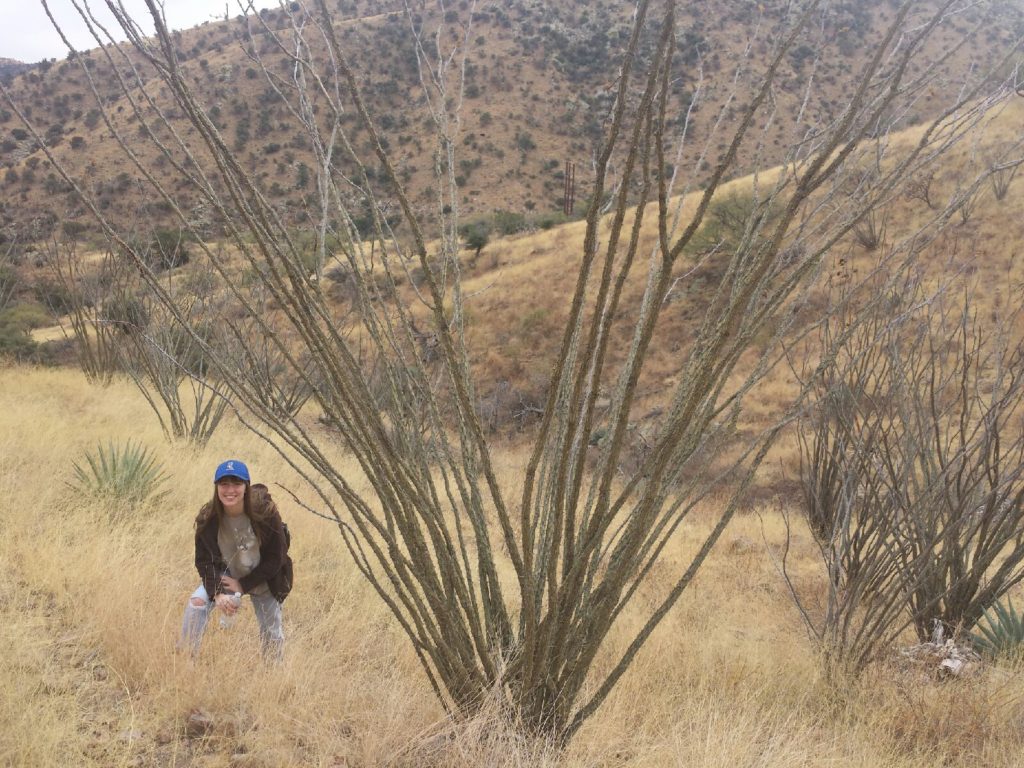
Without a doubt one of the best decisions I made my sophomore year (fall 2017) was to join the University of Arizona Student Chapters of the American Fisheries Society and The Wildlife Society. Besides becoming more involved in the Natural Resources major, my favorite part about these two combined clubs was the privilege of getting to know my colleagues better within our already small department of the School of Natural Resources and the Environment. To get the most out of it, I started with attending all biweekly meetings where volunteer opportunities, internships, technique workshops for learning different skills, and job openings were announced. Guest speakers such as graduate students, professors, and representatives from various organizations came in as well to discuss work we could get involved in, and to give advice. Not to mention we had fun club activities too, such as kickball games!
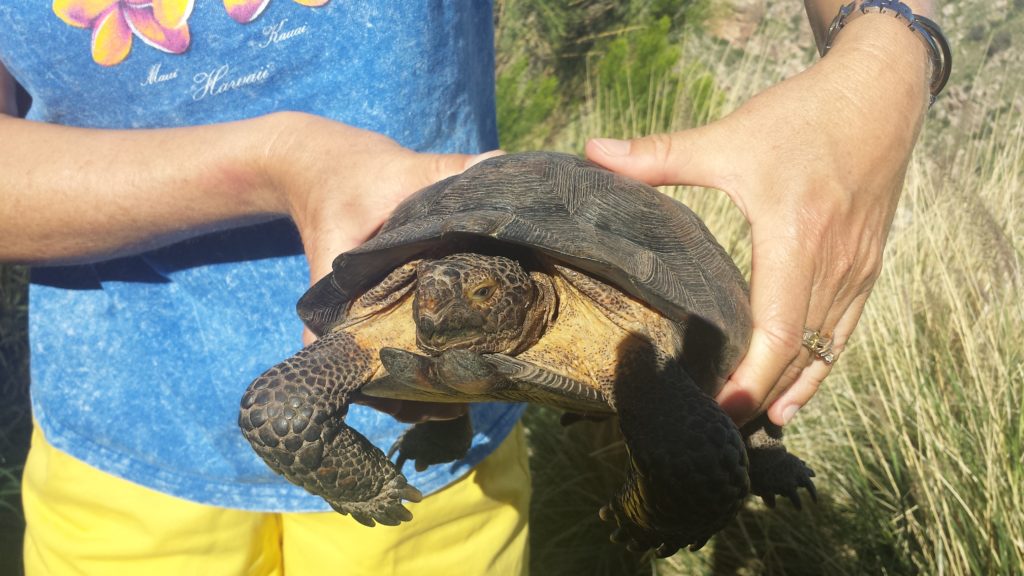
Eventually I made the decision to run as an officer myself. Thus, at the end of the 2018 fall semester, I was elected the 2019 president. Let’s just say at first it was responsibility overload! There were many things that needed to be taken care of. However, with the faithful support and advice of the club, previous presidents, and the rest of my officer team (composed of a vice president, secretary, treasurer, and historian), I was able to begin building my vision for the club. Some of the things I was responsible for as president were running biweekly meetings (preparing PowerPoints and answering questions), distributing and organizing volunteer opportunities, coordinating with other officers, fundraising, outreach, organizing club participation in local and national conferences (booking club-funded transportation and lodging, obtaining students’ Dean’s excuses to miss class), taking care of any logistics (registering the club, answering emails, cooperating with other clubs, etc.), and overall getting to know individuals in order to determine how to best use the club’s resources to meet career goals. In other words, management, organization, and working with people played a huge role! Though it could be challenging, it was a huge blessing at the same time.
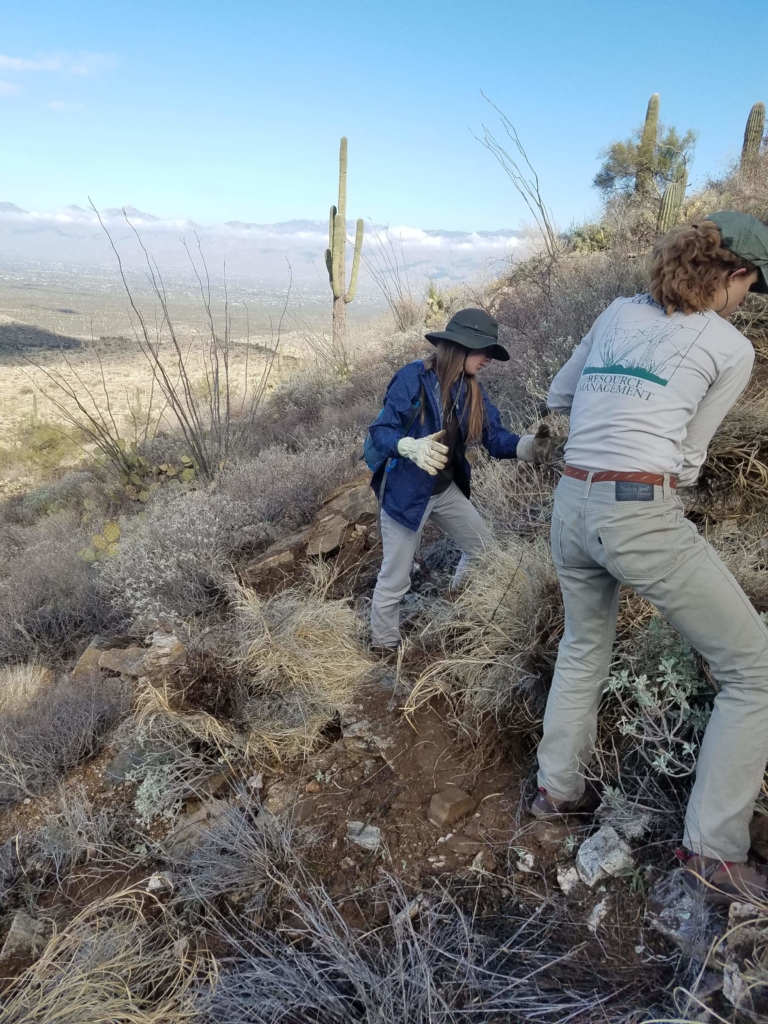
Pulling invasive buffel grass 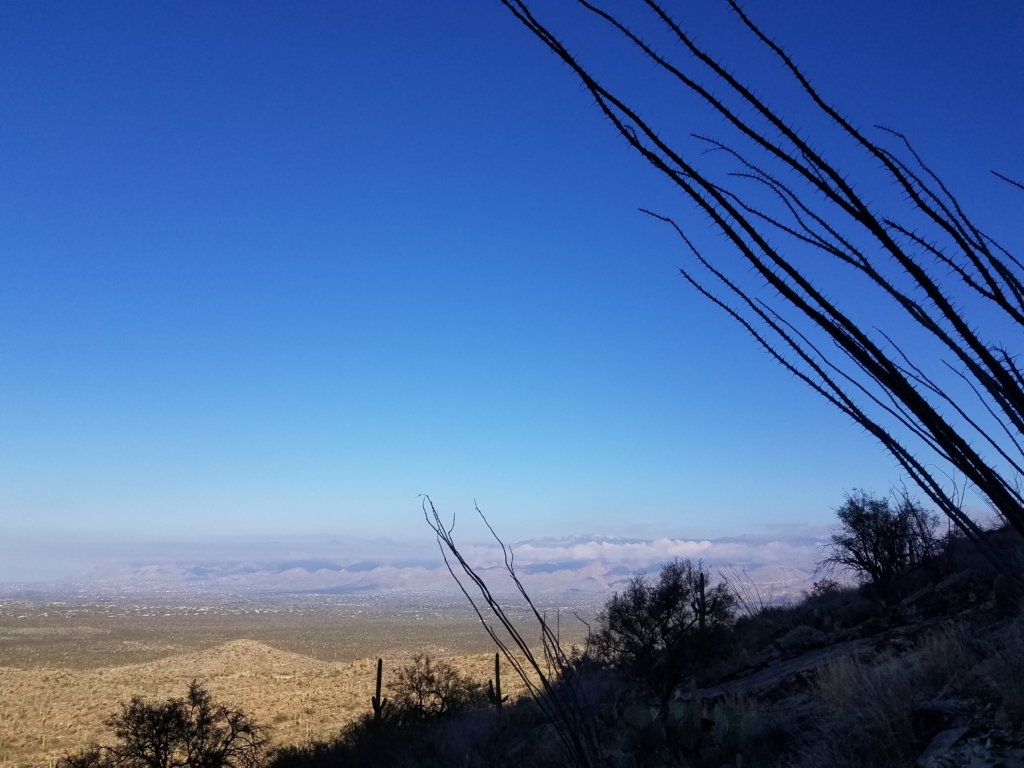
View of the mountains
Several volunteer opportunities I participated in are wash cleanups, outreach events, buffel grass pulls, a jackrabbit survey, and the biannual Aravaipa fish survey. The two-hour wash cleanups take place every month in the Arroyo Chico Wash located near the university campus. Outreach commonly occurs at either elementary schools or public events where the club runs a booth explaining various techniques that biologists use to study wildlife, and displays different animal skulls, furs, and horns. Outreach events also occur at university baseball games where student volunteers present the species pertaining to the mascots of the teams playing. Buffel grass pulls take place every month in Saguaro National Park, whereas the jackrabbit survey is at Buenos Aires National Wildlife Refuge further southwest close to the Mexican border. The latter involves 30-40 people walking in a straight line, each within his or her own transect, and counting any jackrabbits. Bottom line is this: none of these community or environmental services can happen without volunteers! See the club’s website for more information: UA Fish and Wildlife Society.
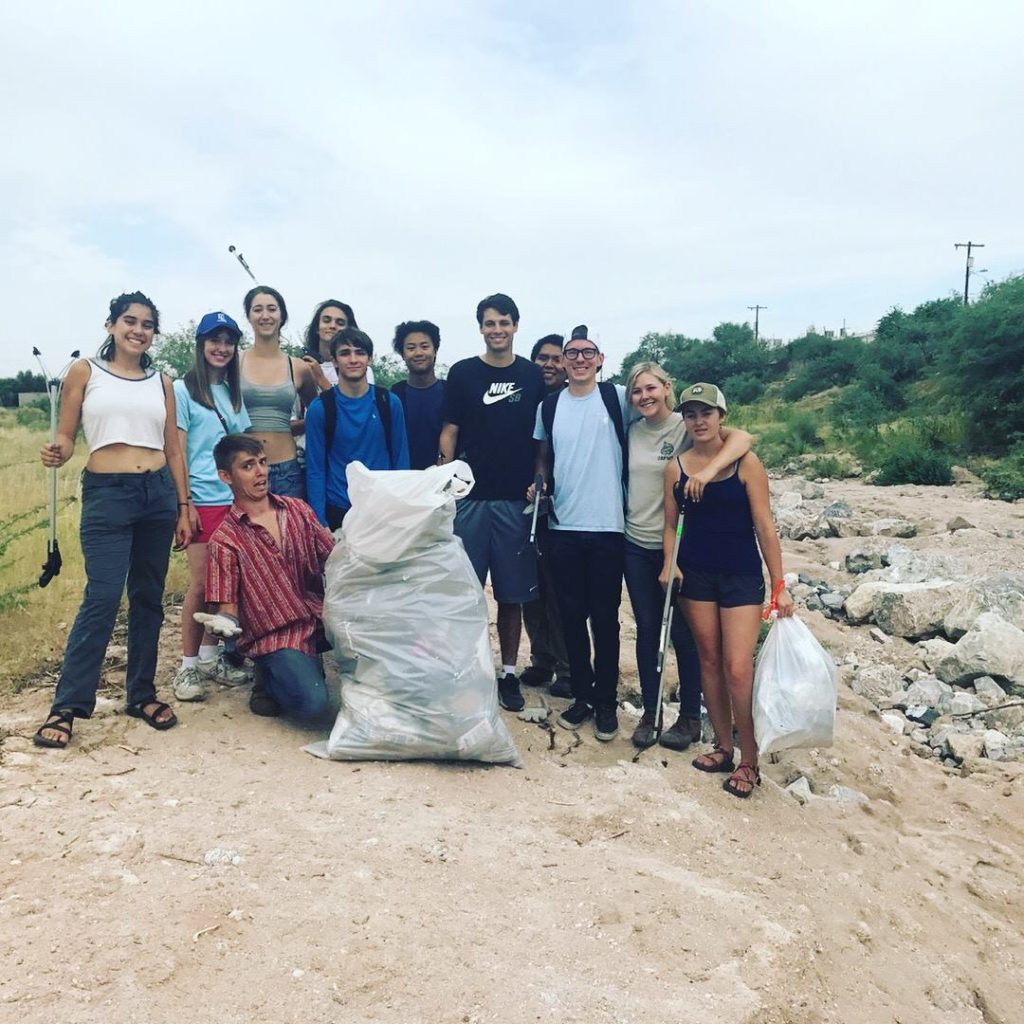

Outreach Night 2017! 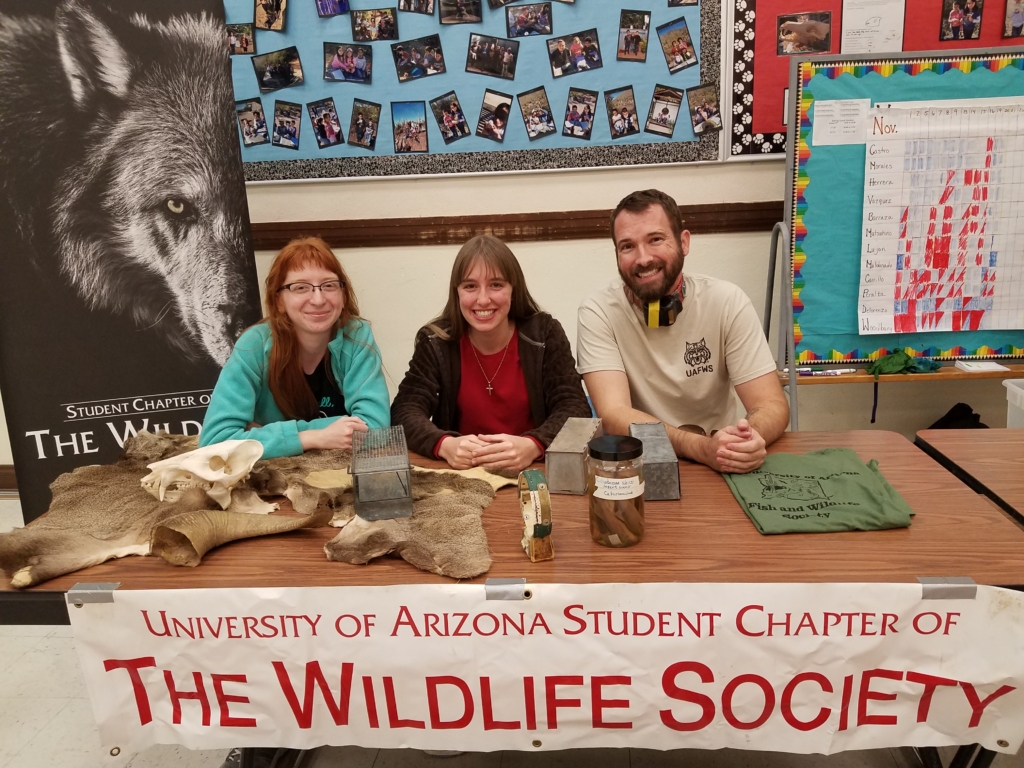
Outreach Night 2018!
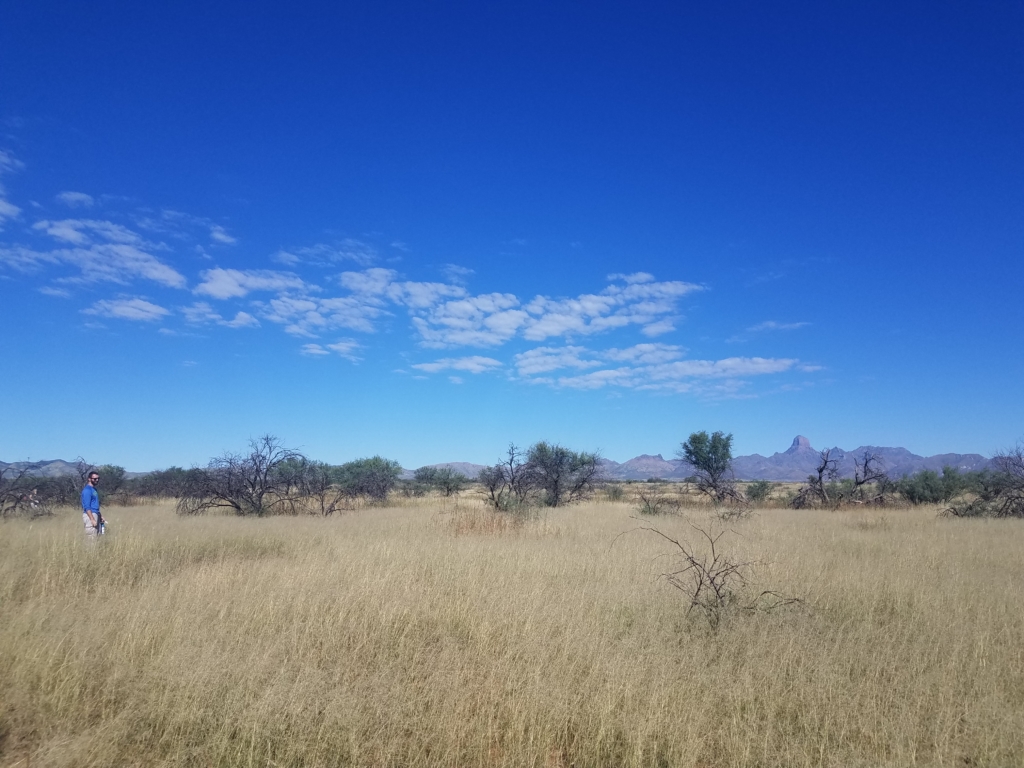
Below are several photos from the weekend-long Aravaipa fish survey that occurs every spring and fall. There are seven native species in the Aravaipa Canyon Wilderness, and sampling is done using seining. Typically this consists of two people holding a pole on either side of the net, quickly moving through the water whilst banging the poles into the substrate and rocks to chase out any fish, and then lastly guiding them into a shallow region near the bank and pulling up the seine. The animals caught are placed into a water-filled bucket to be identified and aged. Once these data are recorded for each individual, the fish are thrown back into the river. A second method is to have two people holding the poles stand in place and face a row of individuals several meters away. These then run and kick their way toward the open seine in a straight line, chasing any fish out from under stones and toward the net which is then pulled up once the kickers arrive. Caught fish are again placed into a bucket. Both these methods are repeated for an entire length of stream to collect a sufficient sample. Our group surveyed multiple sites over the course of two days; we also stayed in a house the first night and camped the second. On top of that we saw a fish barrier, a construction intended to keep out invasive species.
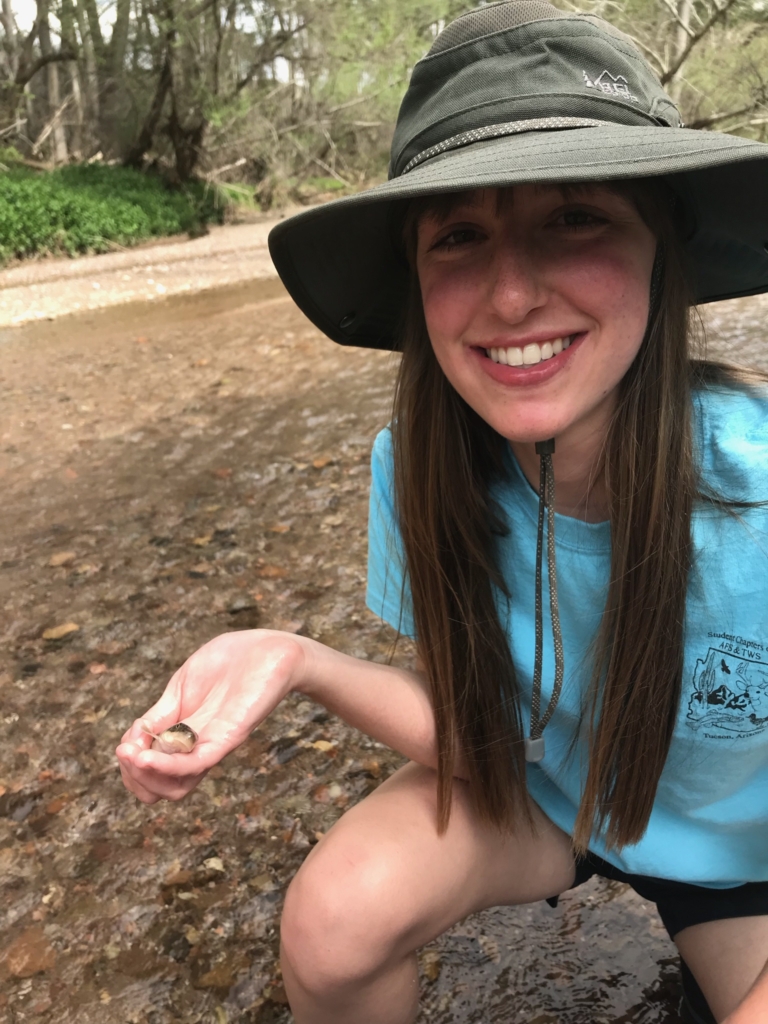
Having fun 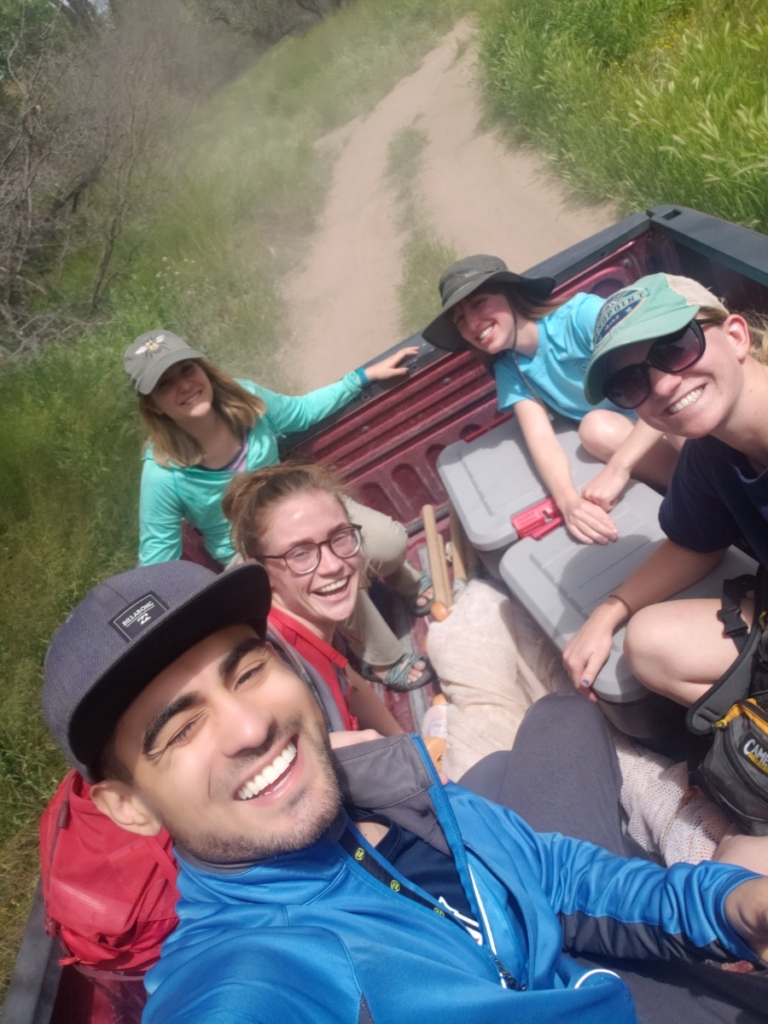
Enjoying the truck ride
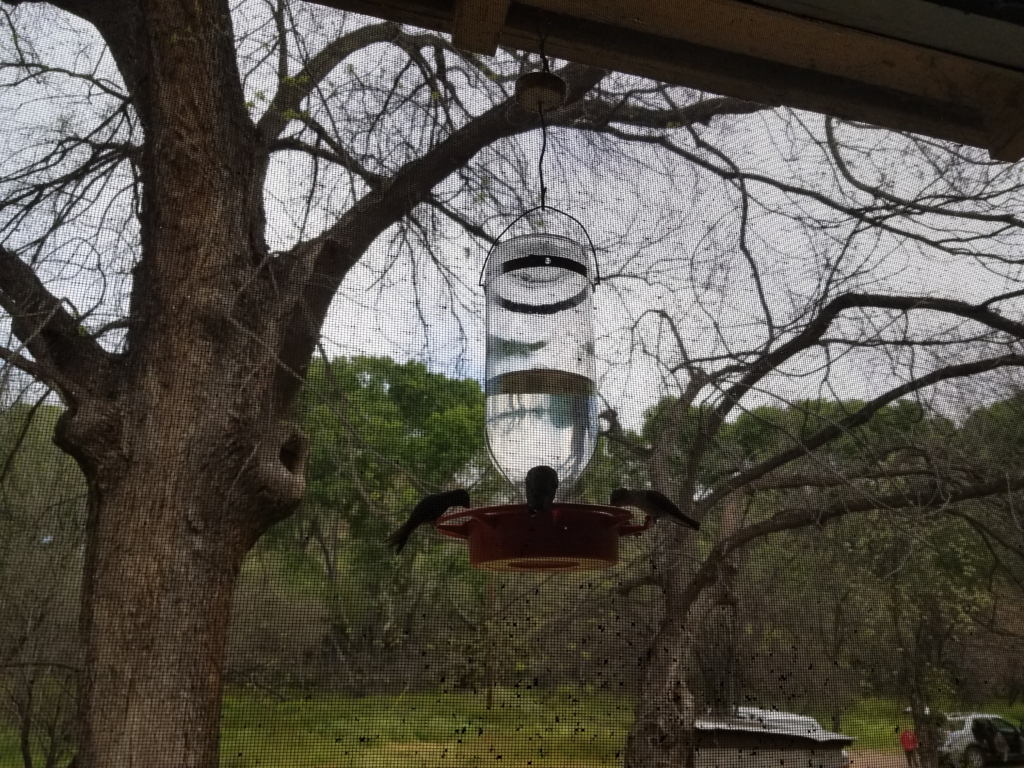
Hummingbirds at camp 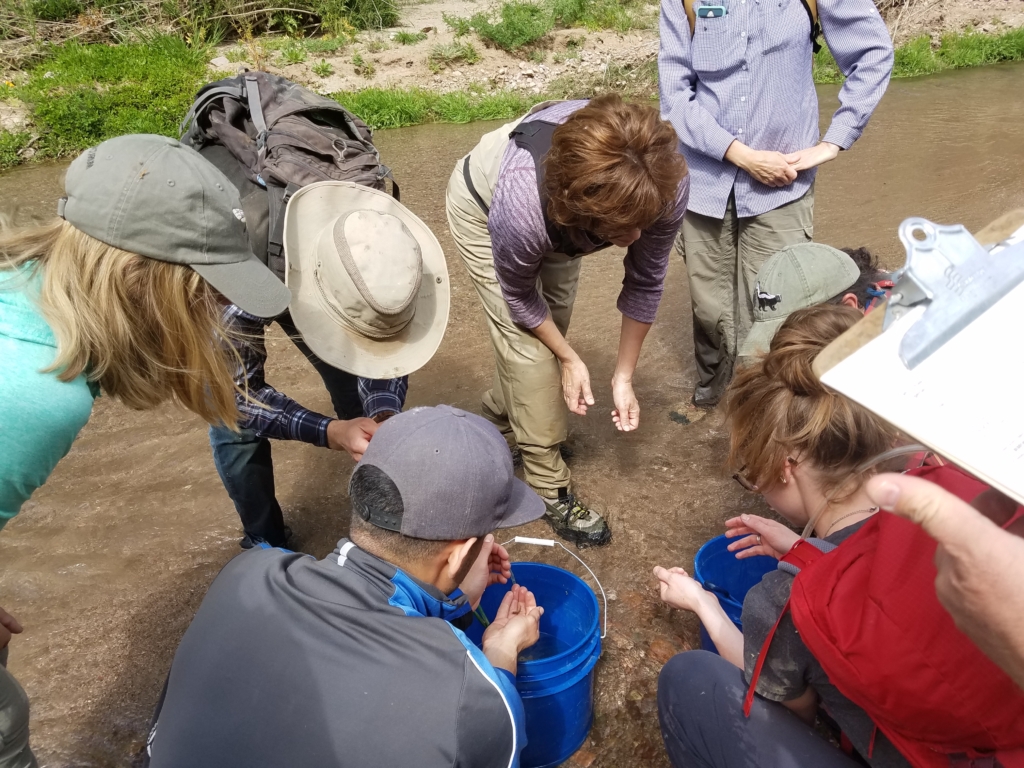
Identifying fish
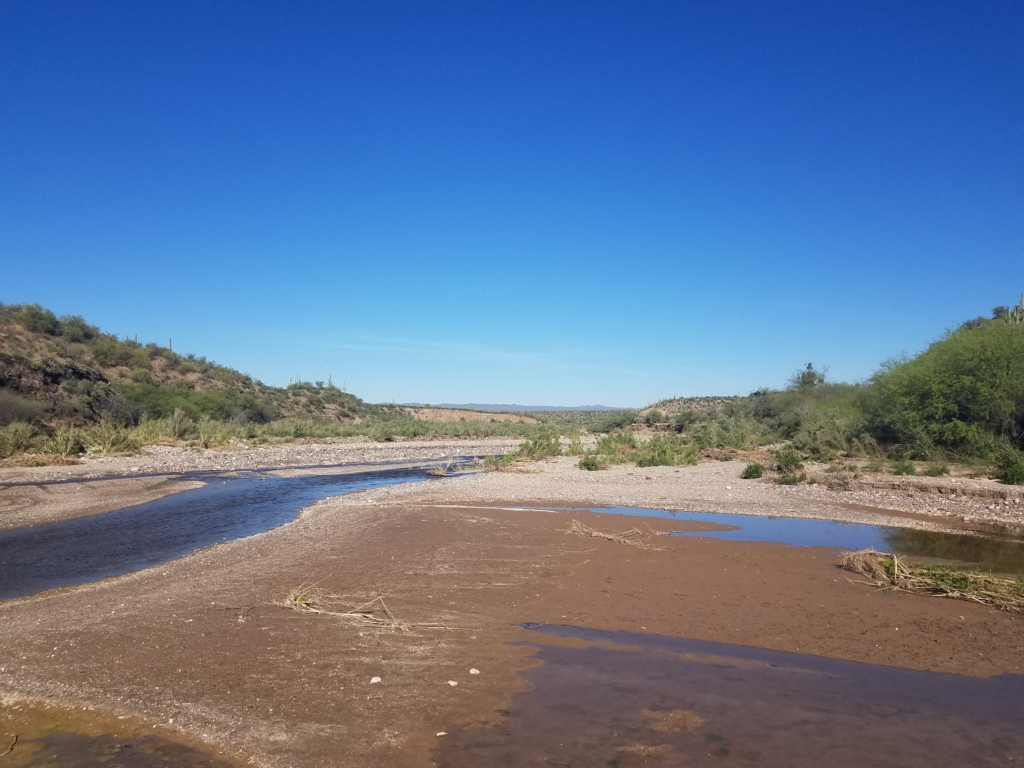
View from the fish barrier 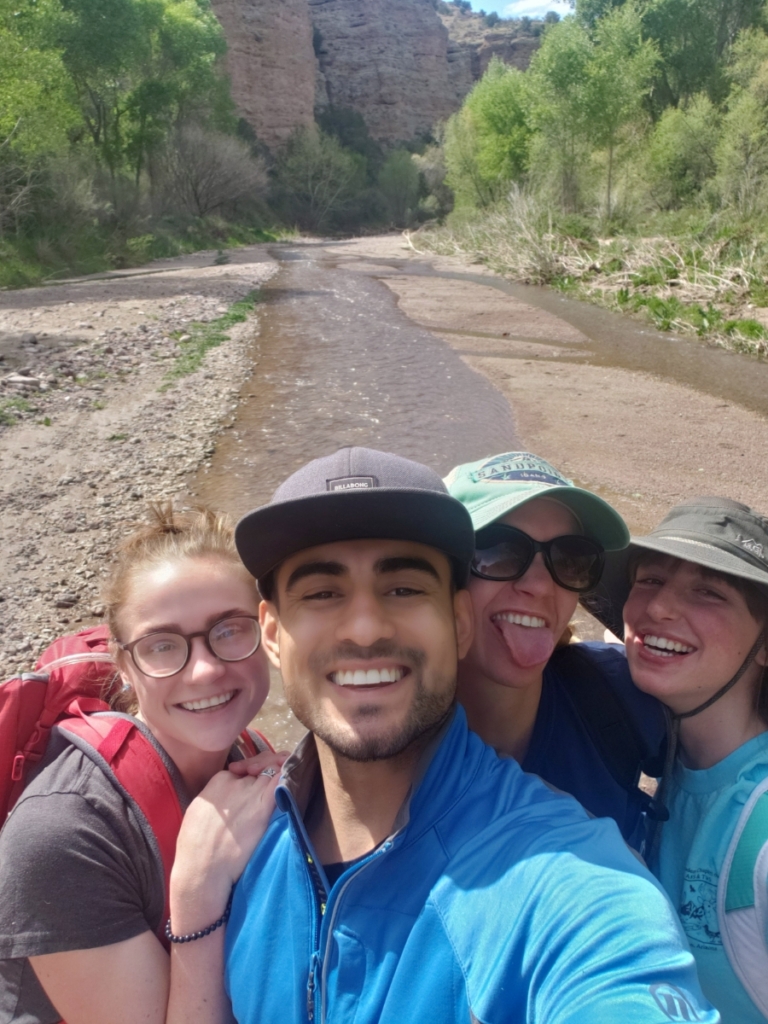
Selfie!
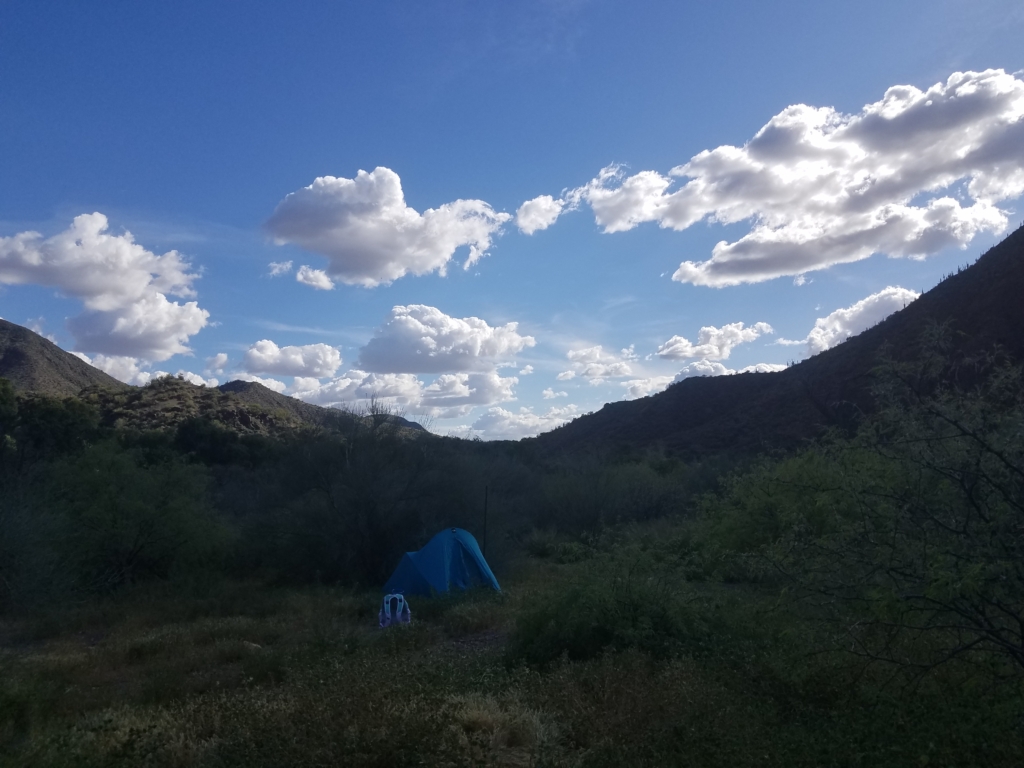
In addition to these many opportunities to build up one’s résumé, an equally important reason students join the club is to travel to conferences to learn skills and network with professionals. Active members have their transportation and lodging paid for by the club fund. Thus, in spring 2019 I attended my first conference: the Joint Annual Meeting (JAM) of the Arizona and New Mexico Chapters of the American Fisheries Society and The Wildlife Society. This weekend trip consisted of attending workshops, poster sessions, and presentations. Attendees were a mix of professors, undergraduates, and graduate students from multiple universities. I also participated in the business meeting of the AZ Chapter of The Wildlife Society to give a report on our club’s activities of the past year. Other fun activities included a student-mentor luncheon in which I met the newly elected president of the AZ Chapter of The Wildlife Society, a dinner banquet where numerous individuals were recognized and received awards, and lastly the entertaining evening student QuizBowl (wildlife/fisheries jeopardy where universities compete against each other. UA placed 2nd overall and 1st in Arizona!). It was a busy but wonderful time! Meeting so many professionals, plus students from other universities also studying wildlife and fisheries, was incredible. Then one year later in spring 2020, I attended the same conference again. Only this time I had my own poster to present on my undergraduate research! Plus it was great seeing many of my friends again who had graduated the previous year.
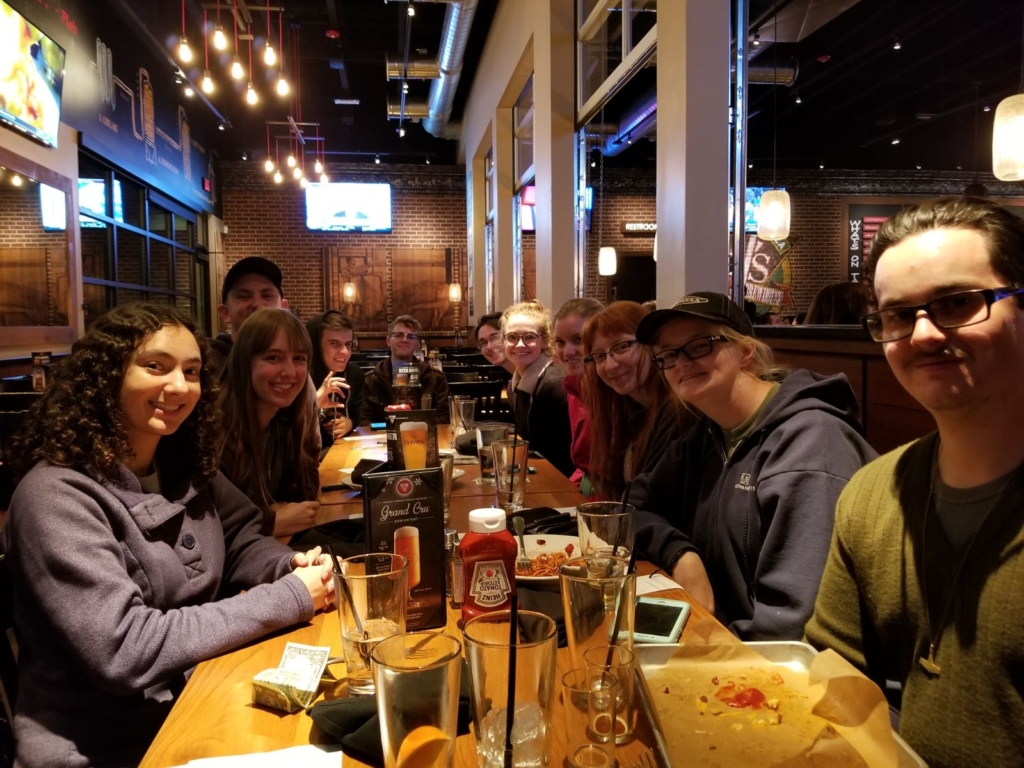
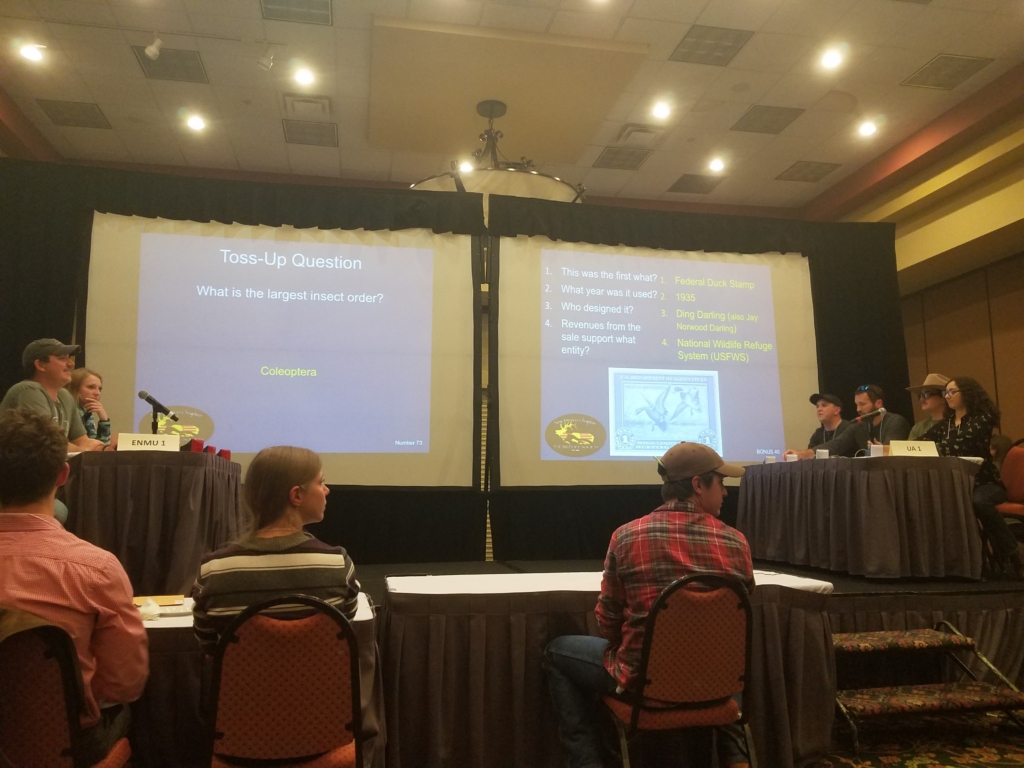
Student QuizBowl Competition 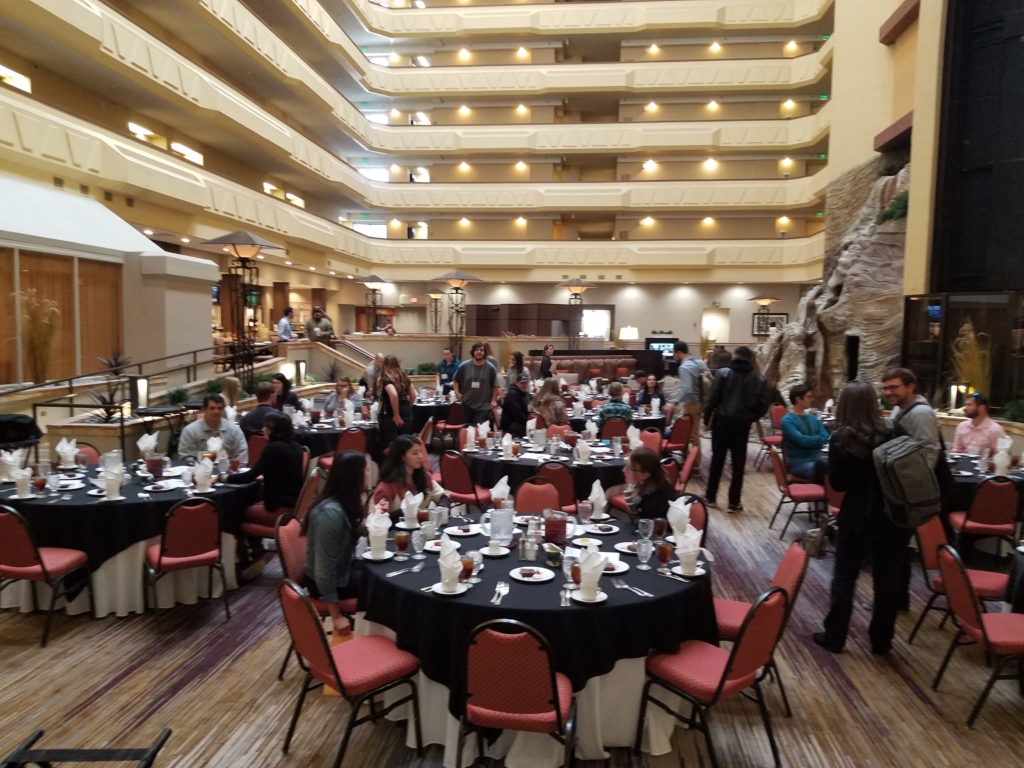
Student-Mentor Luncheon
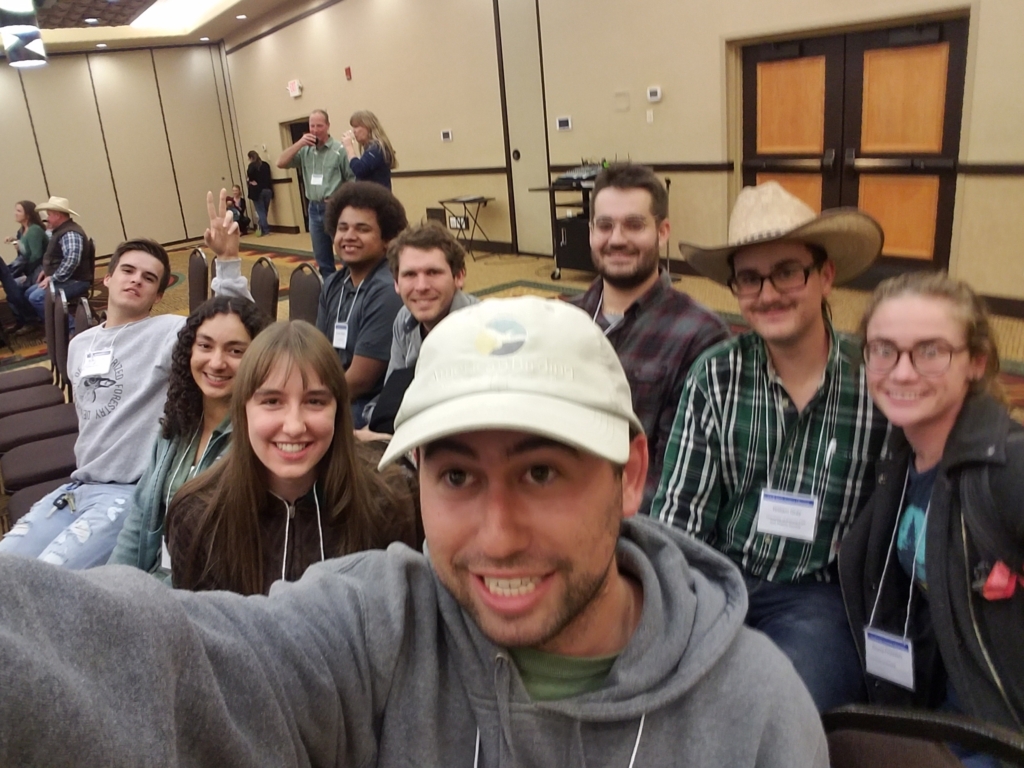
Getting ready to compete in QuizBowl! 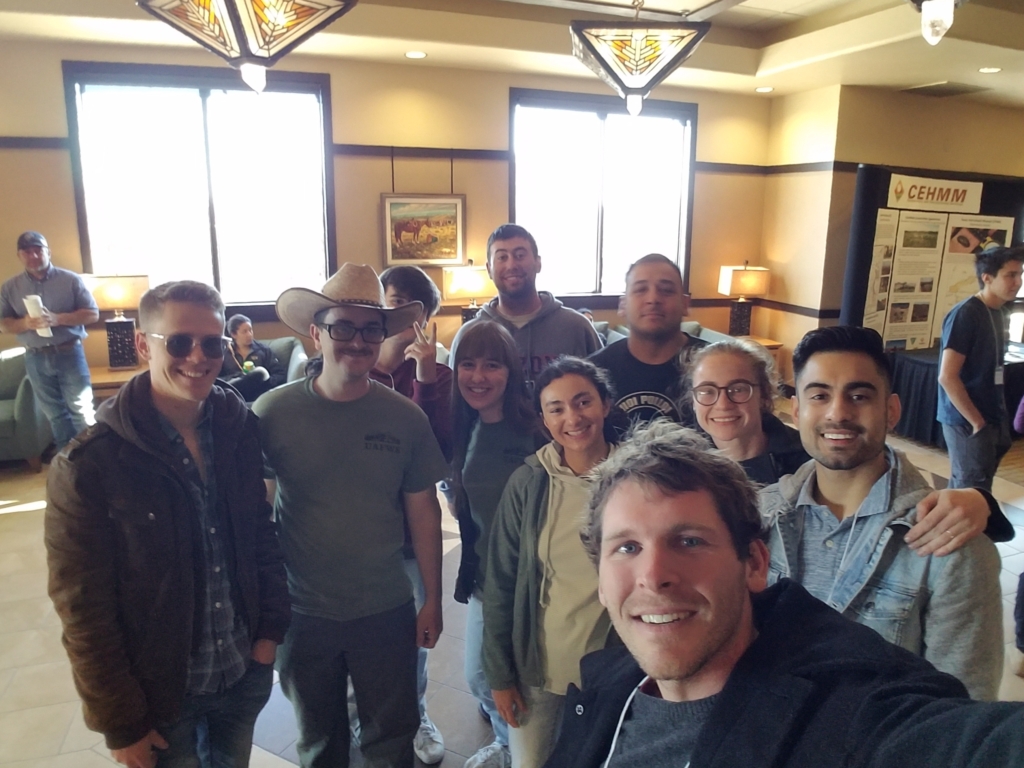
Final photo before parting ways
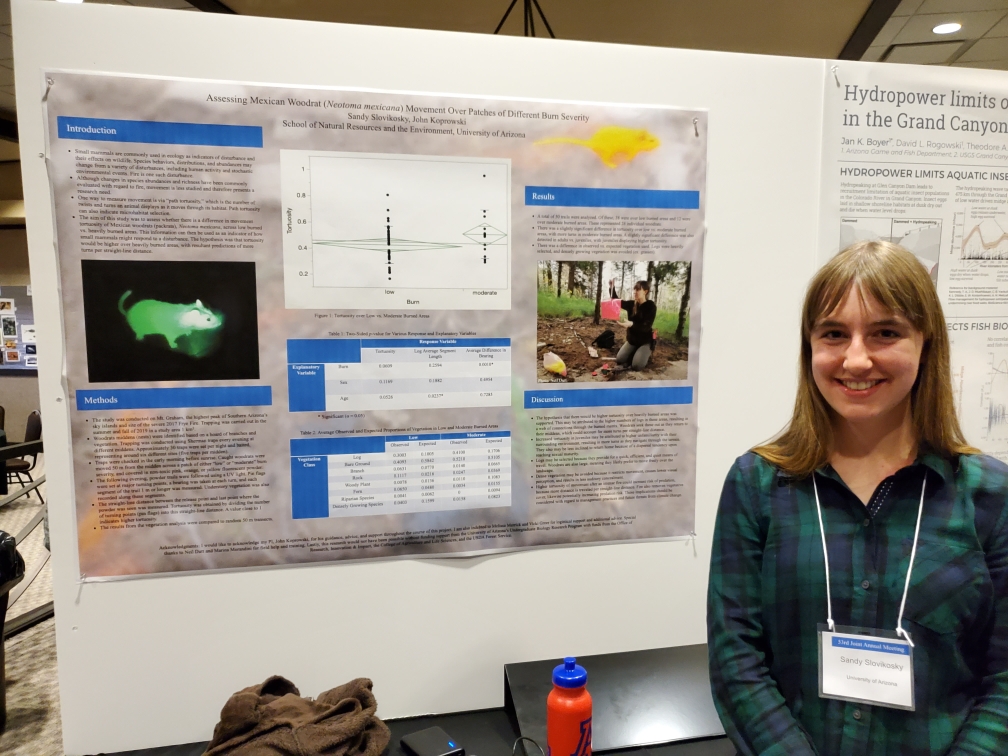
The second conference I attended was also my first national one: the Joint Annual Conference of the American Fisheries Society and The Wildlife Society in Reno, Nevada 2019. It was experiencing history: these two societies have never had their annual meeting together, making this, at several thousand attendees, one of the largest gatherings of fish and wildlife professionals and students ever. And I can only say, what an experience it was! Those days were among the most tiring from my undergrad, but 100% worth it. Being in my senior year, I was looking for potential graduate school advisors and had done my research beforehand regarding which professors I wanted to meet in-person. This entailed not only looking through countless lists of faculty at various universities, but also reading their publications to make a positive first impression. Upon arriving in Reno, the week was defined by running back and forth between talks, receptions, presentations, and networking events. Attending workshops, reading additional scientific literature, and meeting other undergraduates from California to Maine filled spare time gaps. Moreover, as president of the UA Fish and Wildlife Society, I was invited to attend a “Student Chapter Leaders’ Luncheon” where we received and discussed advice from our parent Wildlife Society. That was perhaps one of the highlights. Finally, evenings were marked by my favorite moments: hanging out with my lab group, friends, and UA alumni! Every day featured something different, including a UA reception and informal get-togethers. These are memories I will treasure forever.
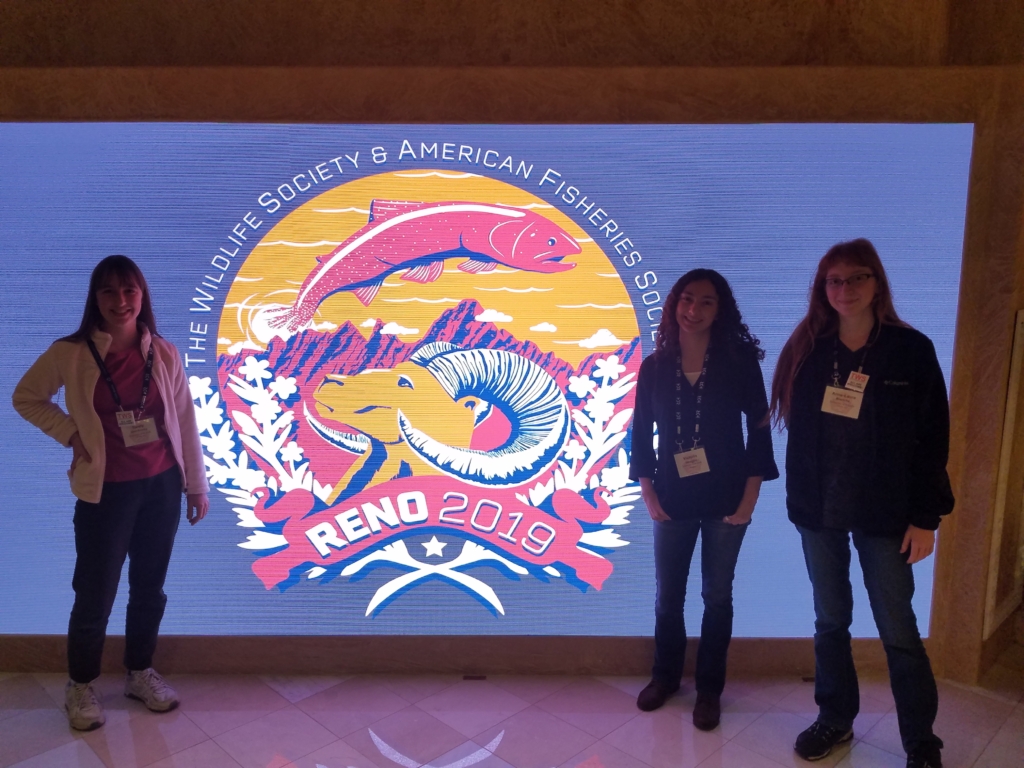
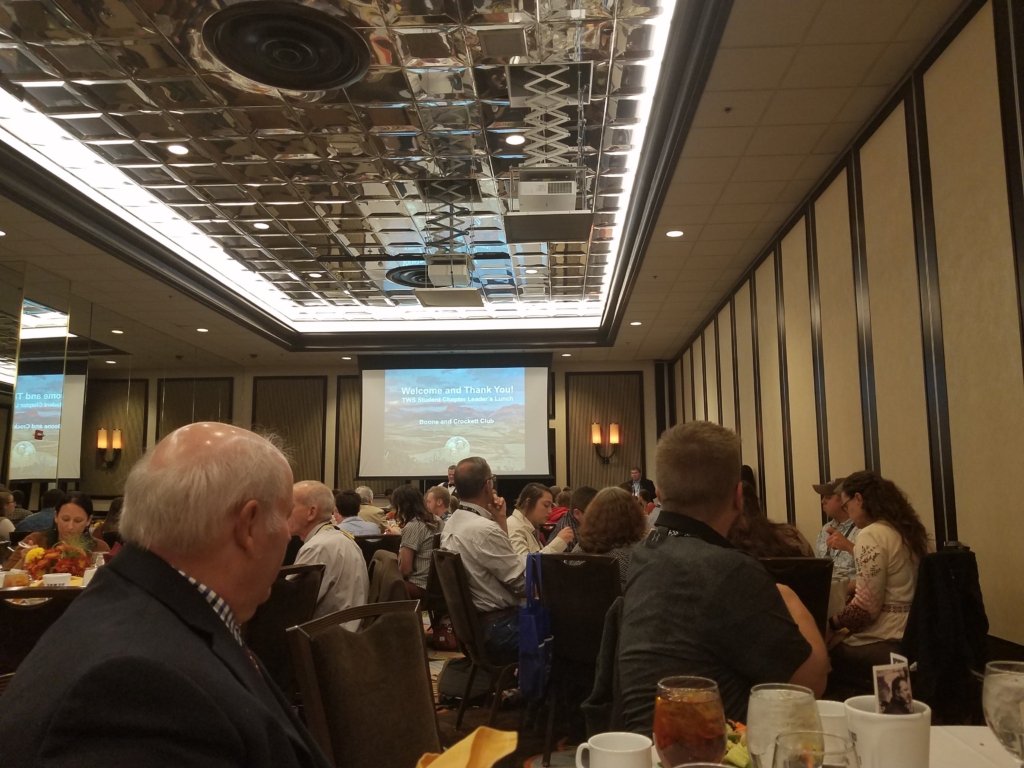
Student Chapter Leaders’ Luncheon 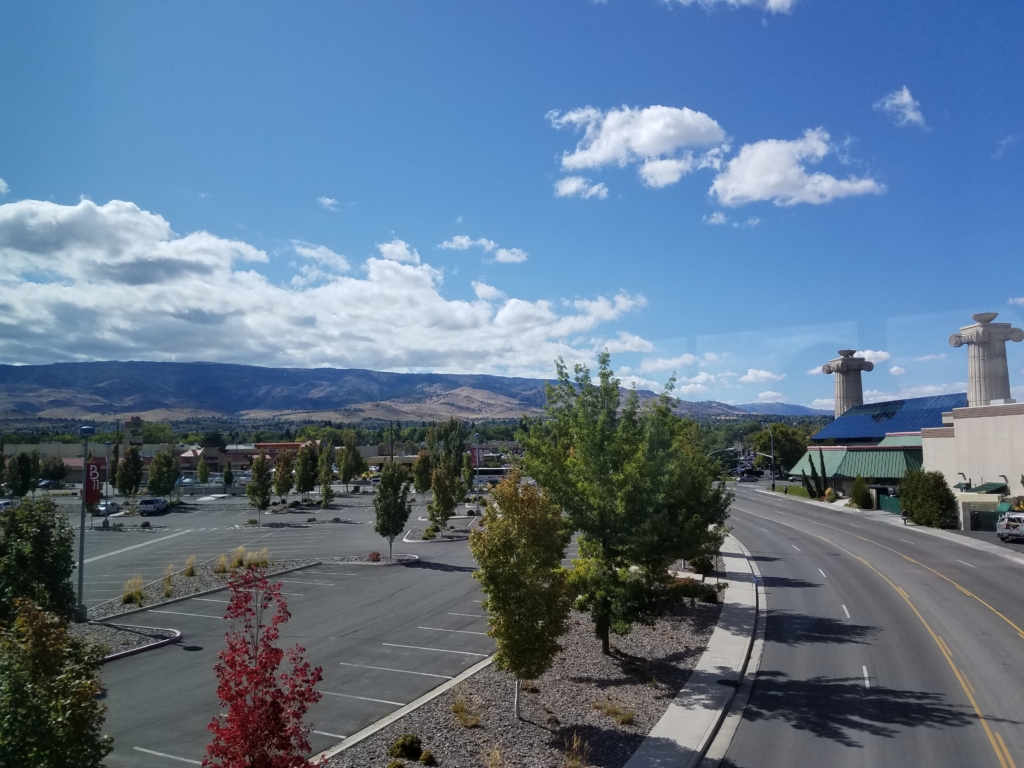
Reno, Nevada
Looking back on this conference has drastically increased my excitement for future conferences. Not only did I meet my future graduate lab group in Reno, but I also realized these annual meetings would present future opportunities to catch up with old friends. Long story short: attend these professional development opportunities! They are worth every penny. Anyone interested in reading a bit more about my experience can find it in this article that I wrote for the UA’s Undergraduate Biology Research Program e-newsletter.
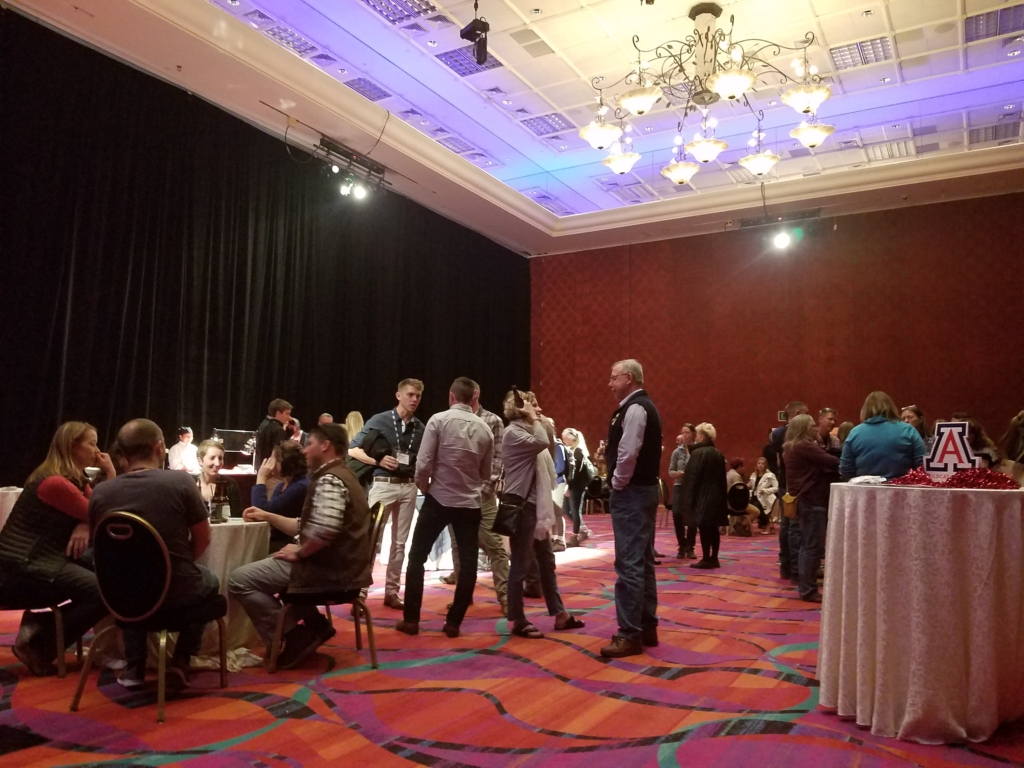
University of Arizona Reception 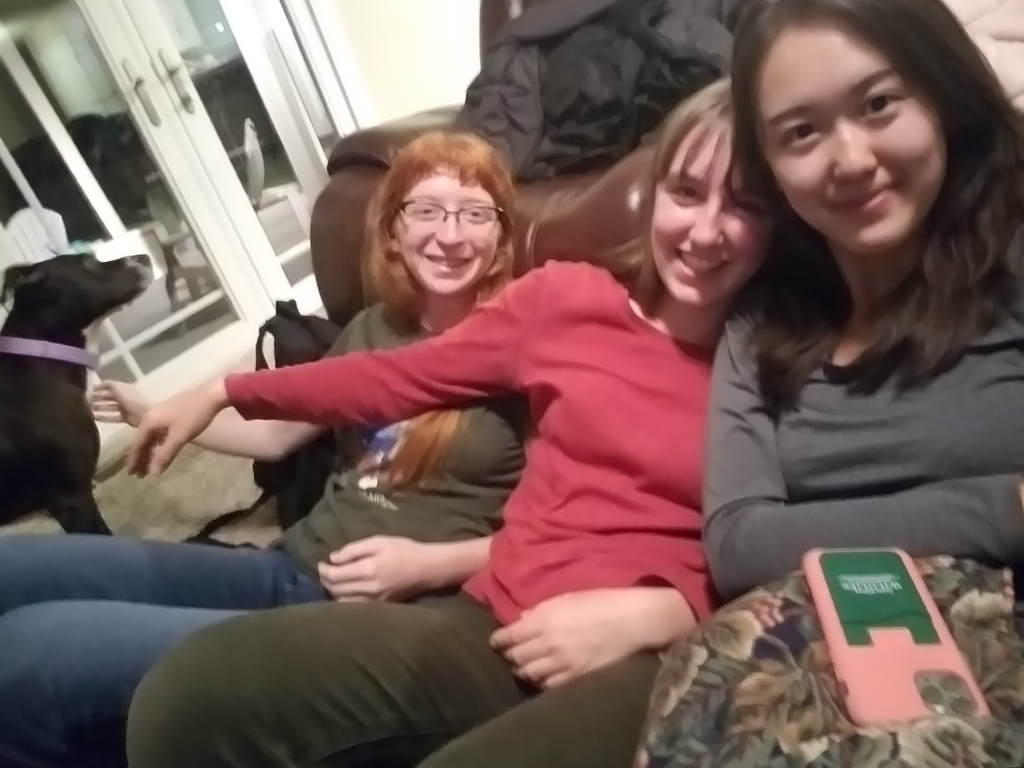
Unwinding after a long week!
My involvement in the club also got my mother interested when the annual photo contest was announced. This is held every year and includes six categories: mammals, birds, reptiles/amphibians, macro (ex. plants), landscapes, and biologists in action. 1st, 2nd, and 3rd place winners in each category receive cash prizes; the top photos are also published in the club’s calendar for the following year. My mother, who is very interested in photography, won a number of prizes three years in a row (check out her photos on my parents’ website: www.slovikosky.com). Email uafwsphotocontest@gmail.com for more information.
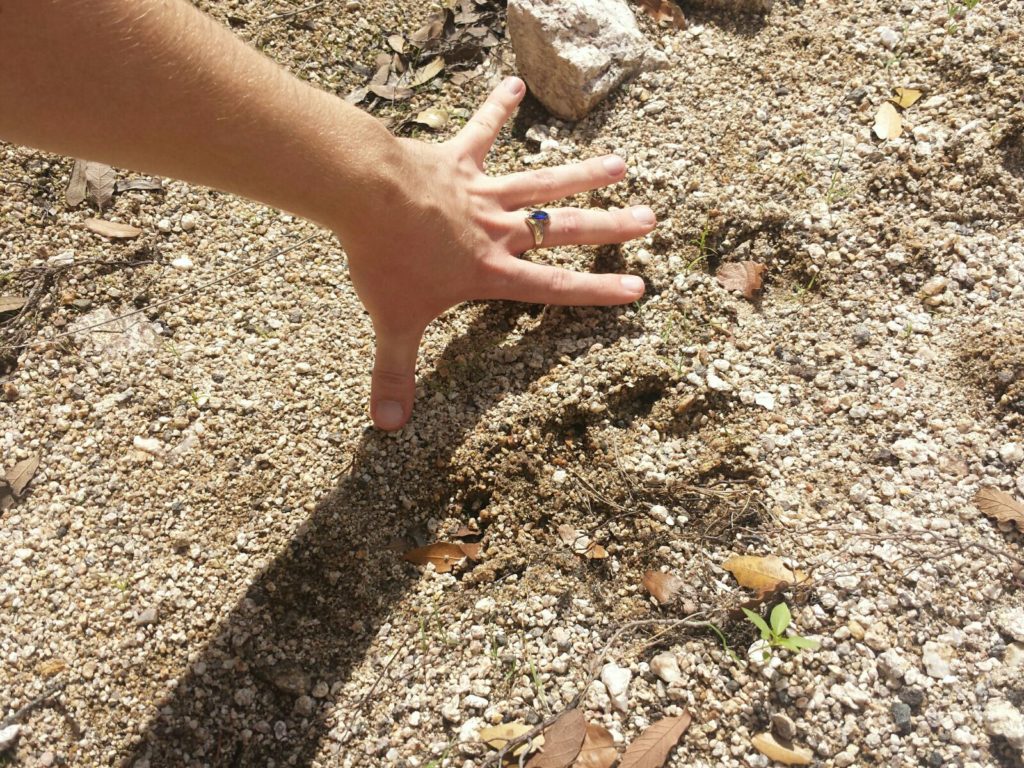
Finally, I had the privilege of writing several short articles for the newsletter of the Arizona Chapter of The Wildlife Society, attached below. In 2017 I wrote about my website in order to help get my name out to professionals and the public, whereas 2018’s article was on my internship in South Africa. In 2019 I described my undergraduate research through the University of Arizona’s Undergraduate Biology Research Program.
Spotlight your Research: Create a Blog
Wildlife ACT: South Africa’s Growing Hope in Conservation
